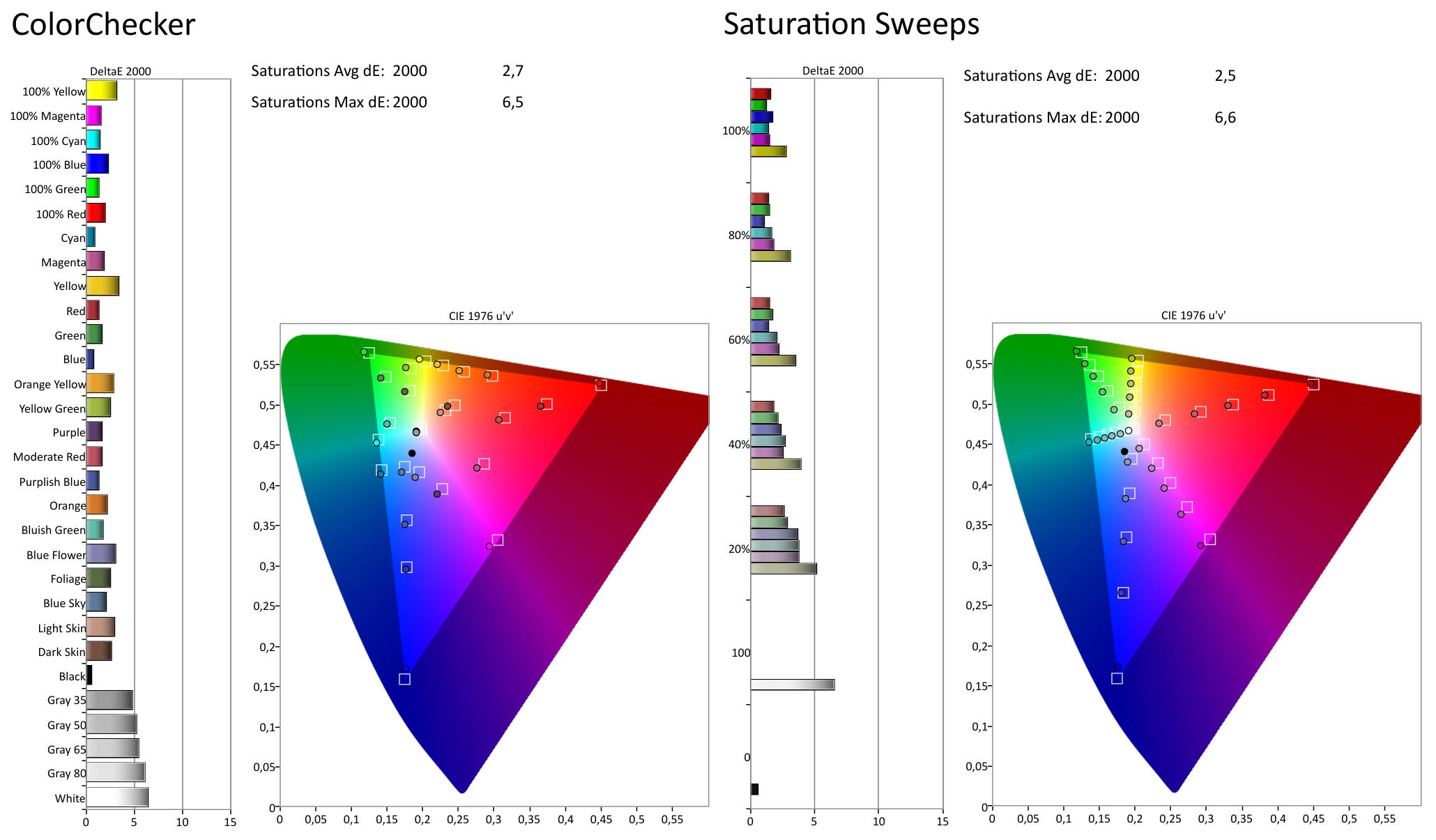HP Envy Move review: portable PC of the future
- June 12, 2024
- 0
An all-in-one PC that you can set up anywhere in the house – that’s the HP Envy Move. The idea is brilliant, the execution is brilliant, but it
An all-in-one PC that you can set up anywhere in the house – that’s the HP Envy Move. The idea is brilliant, the execution is brilliant, but it


An all-in-one PC that you can set up anywhere in the house – that’s the HP Envy Move. The idea is brilliant, the execution is brilliant, but it has even more potential.
Imagine an all-in-one PC (AIO) that you can carry around the house. Why would you do that? There are more scenarios than you think where such a concept can work very well:
The five examples above are just a few of the ways the HP Envy Move (1,399 euros incl. VAT) can be used. Your own creativity is your only limitation, apart from a few hardware choices to consider.
As the name of the Envy series suggests, this is not a business device. The HP Envy Move comes with Windows 11 Home and, thanks to the built-in battery, has no business brother with a comparable mobile option.

Using this device for business purposes can make sense for small SMEs or individual businesses. If you work in a larger company, you will have to deal with the IT team first.
The most important advantage of this device is undoubtedly its intelligent design. Thanks to the practical handle that magnetically attaches to the back, you can take the AIO anywhere. The keyboard with integrated touchpad slides into the casing on the back. As soon as you put the AIO down, the feet rotate 90 degrees and everything stays firmly in place. Removing the HP Envy Move rotates it 90 degrees again so that it is aligned with the AIO.
If you add to this the large 23.8-inch touchscreen, very good speakers, a good webcam and a relatively portable weight (3.8 kg), you have a very interesting solution.
Fortunately, HP has included a good screen in this AIO, a crucial component. 23.8 inches is a nice size, as is the resolution of 2,560 x 1,440 pixels (60 Hz). The IPS panel is of decent quality, with a measured sRGB color gamut of 102 percent.

The default setting is also quite accurate: 2.4 DeltaE for colors and 4.2 DeltaE for white balance. For creative professionals, a DeltaE below two is desirable. A DeltaE value of four or less is still excellent for recreational use.
In contrast, we would have liked a slightly higher value. 961:1 is a bit low. The same goes for the maximum measured brightness of 310 nits. That’s more than enough for indoor use, unless the sun is shining on your screen. Outdoors, it works if you can sit in the shade.
The HP Envy Move is not lacking in computing power. Inside is a powerful Intel Core i5-1335U, more than enough for classic office work, surfing the Internet and streaming videos without waiting.


What you shouldn’t do with this AIO is play games. The integrated GPU in the Intel chip will handle casual games that aren’t 3D intensive. If you’re expecting more than that, you’re in the wrong place.


If creative professionals are interested in this device and appreciate the additional flexibility compared to a fixed AIO, we recommend choosing another device. Photoshop or Lightroom may be able to run, but anyone who values speed will quickly experience moments of frustration. Video editing is not an issue here.
The concept that HP has developed for the Envy Move is very smart for a first generation device. The fabric net on the back is an elegant solution for taking your keyboard with you wherever you go. We recommend that you always turn the keyboard off. It can happen that the keyboard suddenly goes blank because a key is constantly pressed. The fabric is stretched quite tightly around the AIO.

The touchpad to the right of the keyboard is fine for most users. Left-handed people like you are really out of luck, but that’s just us. The keyboard feels high quality. If you type a lot during the day, we recommend something else. The typing comfort just isn’t good enough for that.
A nice surprise is the high-end 5 megapixel webcam. Ideal for Teams or Zoom calls or for video calls with the family. With Windows Hello, logging in using facial recognition is convenient.
Although it is an AIO, you will not find many ports on this PC. Because on the back there is a fabric net with the keyboard. All ports are located on the bottom left and right: 1x USB-A (10 Gbit/s), 1x USB-C (10 Gbit/s, DisplayPort 1.4a) and an HDMI input (v1.4)
Yes, you read that right: a video input. You can connect a game console, Blu-ray player, set-top box, or other peripherals to the HP Envy Move. Instead of a PC, the AIO becomes a “chunky” screen that displays the image from the video source.

There is another connector that we have not discussed: the power connector. With this AIO you get a power supply (90 watts) with a special connector to charge the PC. Why not via USB-C? Charging via USB-C is not possible, although today it is possible at 90 watts. This forces you to add a relic of a connection to your stack of chargers with a new device. An incomprehensible choice.
This concept depends on a decent battery, and luckily that’s OK. HP claims four hours, and we hit that mark with light use. Watching a video, we just about hit the five-hour mark. That’s enough for what this PhD student wants to achieve.

What’s particularly nice is that the 90-watt charger charges the HP Envy Move very quickly despite the large battery. Charging it to half capacity takes just under 45 minutes. This is ideal for plugging the AIO somewhere for a short time and then using it again flexibly without a power outlet nearby.

If we can continue to hammer on the same nail: It’s a shame that USB-C was not chosen for charging. You always have it somewhere nearby anyway. Now it’s time to accommodate a new type of charger.
As you can read, we are fans of the mobile AIO concept and its implementation. The HP Envy Move (1,399 euros including VAT) is a hit, but at the same time we are a little stressed. Suddenly there are the Copilot Plus PCs with very interesting Qualcomm Snapdragon X chips on board.
Now imagine a second-generation HP Envy Move, with a Qualcomm ARM chip that’s very power efficient, a much thinner chassis because passive cooling is enough, and a much longer battery life. All that with a USB-C port that supports charging, and the geek in me starts drooling.
However, that doesn’t change the fact that the current (first) generation of the HP Envy Move is still absolutely worth considering. Above we are just speculating. We hope that this concept sells well so that version two will follow. Dreaming is allowed. Until that becomes reality, this is the best there is. The undersigned must purchase one when he picks up this review unit. His wife is a fan and doesn’t want to give up the AIO.
HP Envy Move All-In-One (24-cs0001nb): Intel Core i5-1335U, Intel Iris, Windows 11 Home.
Warranty: 2 years when taken away
Source: IT Daily
As an experienced journalist and author, Mary has been reporting on the latest news and trends for over 5 years. With a passion for uncovering the stories behind the headlines, Mary has earned a reputation as a trusted voice in the world of journalism. Her writing style is insightful, engaging and thought-provoking, as she takes a deep dive into the most pressing issues of our time.